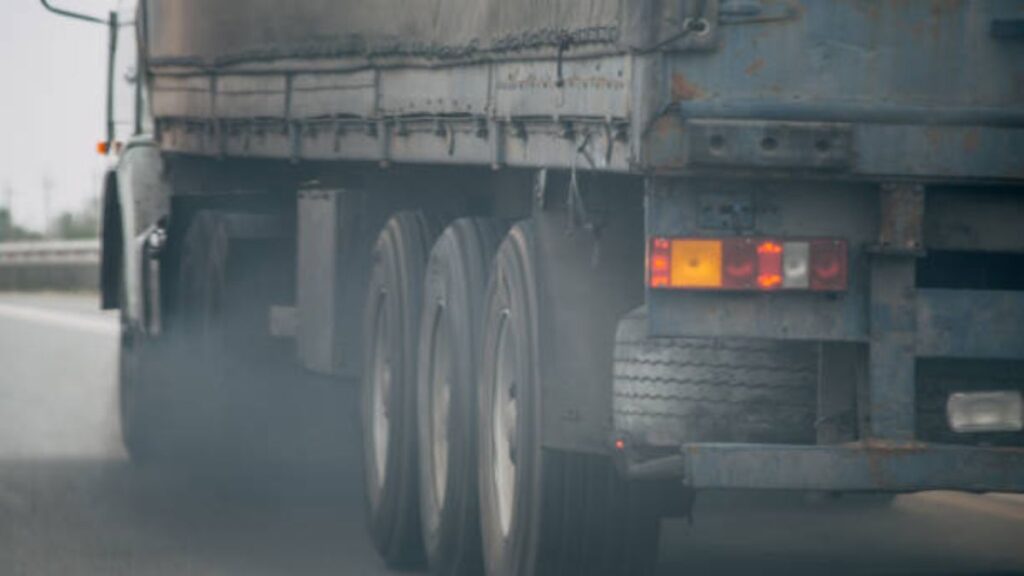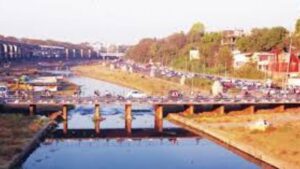Study conducted by IIT Bombay identifies ‘super-emitters’, the most polluting vehicles on Mumbai-Pune Expressway

Indian Institute of Bombay conducted a study of super-emitters on the road, vehicles that cause maximum pollution on the Mumbai-Pune Expressway and suggested measures to control vehicular pollution on the highways.
Global warming and pollution related illnesses and deaths triggered this study. According to the Global Burden of Disease Study (GBD, 2021), 16.7 lakh deaths have been attributed to air pollution in India.
In order to help curb vehicular pollution, the institute conducted a study to find out which type of vehicles cause the maximum air pollution so that proper action can be taken to either take them off the roads or to figure out ways to reduce their emissions.
The polluting characteristics of all vehicles are not the same. Some vehicles release disproportionately higher amounts of pollutants. The study from the Indian Institute of Technology, Bombay (IIT Bombay) investigates the factors determining the polluting characteristics of such high-emitting vehicles or ‘super-emitters’.
Super-emitters are vehicles that are either old, poorly maintained, over-loaded heavy-duty vehicles or all of them. They release significantly higher amounts of pollutants compared to the other vehicles in the fleet.
This study was conducted at the entry and exit of the Kamshet-I tunnel located on the Mumbai-Pune Expressway. Roadway tunnels offer ideal conditions for this study because of the confined space within the tunnel, which effectively traps the emissions from the vehicles, barring the influence of other ambient sources.
The researchers set up their pollutant-measuring equipment at the entry and exit of the Kamshet-I tunnel located on the Mumbai-Pune Expressway. Along with exhaust emissions (resulting from incomplete combustion of fossil fuels), non-exhaust emissions (resulting from brake wear, tyre wear, road surface wear, and resuspension of road dust) were also collected. The traffic data was collected using high-definition video cameras and the vehicle registration numbers data (collected manually). The study collected data over two weeks.
Findings of the study
For light-duty vehicles (vehicles that weigh less than 3,500 kg such as cars, two-wheelers, three-wheelers, and light commercial goods vehicles), the age of the vehicles and the maintenance of the engine potentially determines whether the vehicle is a super-emitter.
In the case of heavy-duty vehicles (vehicles that weigh more than 3,500 kg, such as buses and trucks), the overloading condition, along with the age and maintenance of the vehicles, contribute to the disproportionately high pollutant emissions.
Twenty one percent of vehicles passing through Kamshet-I tunnel on Mumbai-Pune Expressway were ‘super emitters’. Of these, around 10% had a visible plume of smoke, and 11% were overloaded freight vehicles with unacceptable levels of obnoxious gases.
(Vehicles that emitted a visible plume of smoke or appeared to be overloaded were identified as super-emitters.)
Vehicle Age and Engine Maintenance
Old vehicles with engines that don’t comply with modern emission technologies and poor maintenance of relatively new vehicles could lead them to become potential super-emitters. Overloaded vehicles, especially heavy-duty vehicles, require additional fuel to power the vehicle, leading to the release of higher pollutant emissions.
Additionally, overloaded vehicles also cause higher non-exhaust emissions due to the higher road surface friction while moving. The vehicle scrappage policy in India focuses on the scrapping of private and commercial petrol vehicles more than 15 years old and diesel vehicles more than 10 years old. However, the researchers did not find strict enforcement of these policies.
Moreover, some of the relatively newer vehicles, likely due to poor maintenance, can lead to disproportionate pollution from a significant portion of vehicles in India.
Recommendations by IIT Bombay
The IIT Bombay study has highlighted the importance of enforcing strict regulations along with strengthening vehicle inspection and maintenance programs on India’s vehicle fleet with respect to super-emitters and their disproportionate release of pollutants. With over one-fifth of the vehicles in India being estimated to be potential super-emitters, it is high time the authorities take action.
According to the Voluntary Vehicle Fleet Modernization Program (VVMP) published by the Ministry of Road Transport and Highways, the replacement of vehicles at the end of their lives will reduce vehicular pollution by 15-20%.
However, this alone will not be sufficient because even a relatively new heavy-duty vehicle can be a super-emitter if loaded beyond its capacity or poorly maintained.







